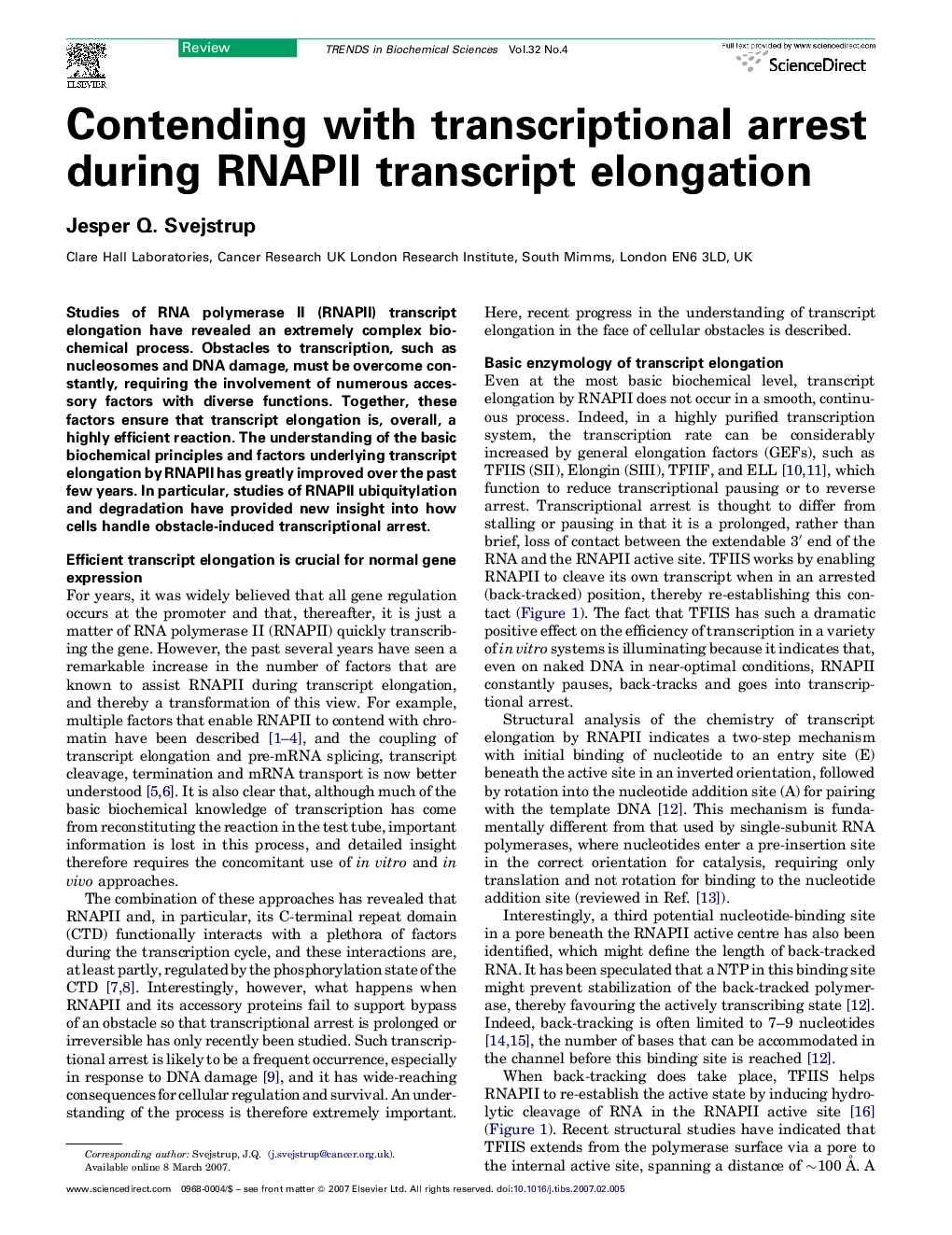| Article ID | Journal | Published Year | Pages | File Type |
|---|---|---|---|---|
| 2031782 | Trends in Biochemical Sciences | 2007 | 7 Pages |
Abstract
Studies of RNA polymerase II (RNAPII) transcript elongation have revealed an extremely complex biochemical process. Obstacles to transcription, such as nucleosomes and DNA damage, must be overcome constantly, requiring the involvement of numerous accessory factors with diverse functions. Together, these factors ensure that transcript elongation is, overall, a highly efficient reaction. The understanding of the basic biochemical principles and factors underlying transcript elongation by RNAPII has greatly improved over the past few years. In particular, studies of RNAPII ubiquitylation and degradation have provided new insight into how cells handle obstacle-induced transcriptional arrest.
Related Topics
Life Sciences
Biochemistry, Genetics and Molecular Biology
Biochemistry
Authors
Jesper Q. Svejstrup,
